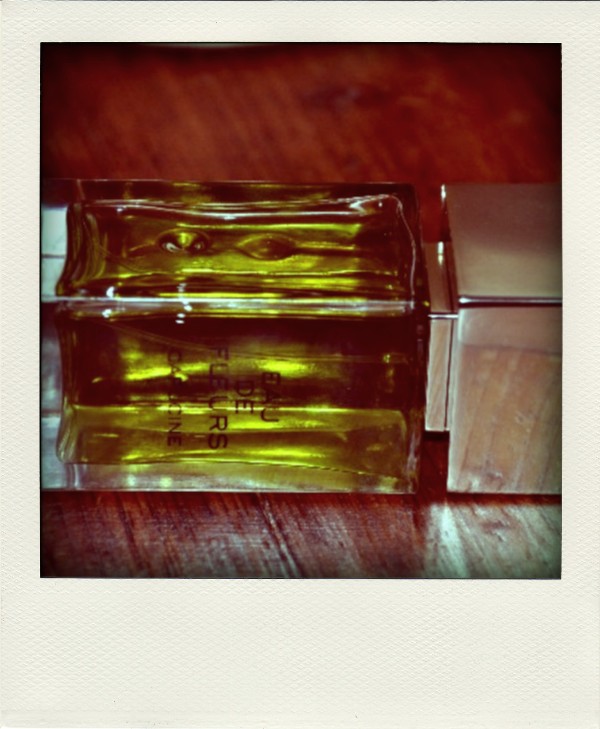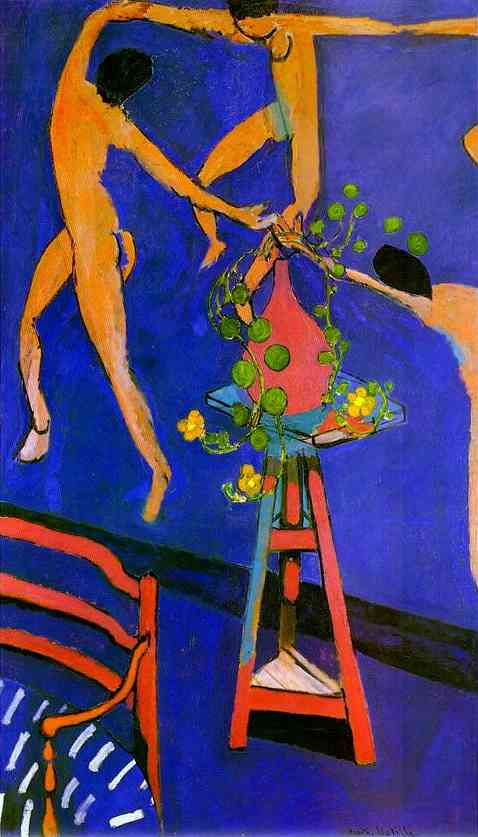Chloé Eau de Fleurs Capucine (2010): The Nose-Twister {Perfume Review}

Capucine is one of three new fragrances in the new Eau de Fleurs collection by Chloé, which reportedly is about paying a higher-end homage to the floral heritage of Chloé. Their first fragrance in 1975, Chloé, is discontinued in limited distribution and many people still remember it as one of the most opulent tuberose fragrances that came to be. Next came Narcisse in 1992, another floral fragrance. Today, the new Chloé riffs on rose.
Eau de Fleurs further expands this tradition while bringing an eau-de-Cologne twist to it. Hannah MacGibbon who art-directed the trio of perfumes Capucine, Néroli and Lavande said, "Flowers have been at the heart of the Chloé brand since its creation. I wanted to offer a floral cologne collection with the highest quality materials for a return to authenticity and all that is exceptional."
I should have started by reviewing Néroli, which is the composition most indebted to the eau de Cologne tradition in the group, but Capucine caught my attention.
Capucine, which was composed by perfumer Louise Turner of Givaudan, is really a meditation on the scent of nasturtium and can be considered to be a nuanced soliflore rather than a linear one, which is what most people might have in mind when they think about single-note fragrances. The added quirk for Capucine is that nasturtium seems to have been very rarely illustrated by perfumery. Nasturtium has recently appeared as a note in Bulgari Omnia Green Jade and Victoria's Secret Very Sexy, as far as I can tell, but it is not a well-known note in perfumery although essences of nasturtiums were distilled. A partial explanation for the relative unpopularity of nasturtiums in fragrances might be that it offers nuances which not all can be considered easy-on-the-nose due to its sulfuric contents. After all, as Pliny relates, they were used in the antiquity to smoke out snakes. A phenomenon which was reportedly observed for the first time by the daughter of Linneaus is the capacity of certain nasturtiums to give off little flames like electrical sparks in the still air of hot summer evenings in July. More largely adopted as an edible plant, the scent of the nasturtium flower was nonetheless duly noted hence its popular etymology reported by Pliny to mean to "twist the nose."
Notes: galbanum, bergamot, lemon, neroli, juniper berries / sage, lily of the valley, absolute of jasmine, absolute and essence of rose / Ambroxan, woody notes, musk...
Capucine, past the fresh citrus top, opens on a delicious impression of crushed leaves and grass (galbanum) with an overtone of lightly sweet honey and a round body one can feel it owes to amber (Ambroxan) without smelling of it so much. There is nevertheless a subtle impression of sweet lemon Lipton tea with additional aromatic nuances of pungent dry herbs, then blond hay.
White musks peak through and as often, I find them a bit on the harsh side, especially when coupled with very sappy green notes. I would also say that sometimes white musks run the risk of making an original accord smell more banal and this is the thought which crosses my mind initially.
Next, the characteristic peppery smell of nasturtiums develops and for whoever likes spicy aromas, they will be interested by this green peppery and powdery scent with a hint of cream. The smell of nasturtiums has been compared to that of mustard seed but much weaker. It is also most commonly perceived as having sweet, bitter and peppery facets. They have been used for a long time as spices and condiments or in salads. In The Joy of Pickling by Linda Ziedrich, nasturtiums are lauded for being entirely edible including their seeds and "they're hot as peppers." When brined, they are said to be better capers than the actual capers, with a crunchier texture and an added peppery facet which earned them the nickname of "Poor man's capers."
The composition then becomes woodier while keeping its aromatic and green facets. This passage is quite original although one could see a precedent in Poivre Piquant by L'Artisan Parfumeur for the association of three of these facets: honey, pepper, and cream, but here the green facet is very present. The green pepperiness soon translates as something akin to something even spicier, a green chili pepper: it's hot but cool-toned at the same time, a bit dusty, as if choke-full of Capsaicin. This is where you can catch this faint aroma of mustard seed and even feel a minty-like tingle through your nose landing on your tongue. There are also notes of crunchy green rose buds. The more obvious sweet notes have receded to leave a sensation of both soft and austere spiciness, which is quite different from the very sweet, nectar-like fragrances that are more commonly experienced these days.
Chloé Capucine could have been an Hermessence offering and is very "niche" as far as its focused aesthetic goes. It gives this impression of a well-delineated short piece rather than a symphonic construction, as I already pointed out in the Vétyvério review.
As the scent mellows down further with vanilla, then a more apparent amber, it makes you think a little bit more about a refreshing forest in the spring, thanks to the suggestive underbrush quality of the lily-of-the-valley note. People who appreciate the contrast of the vanilla-and-vetiver accord in the new formulation of Habanita will find a distant echo of this idea here, but as it were much spicier and leafier. With time, the perfume morphs into a delightful lemony, citronella and green ambery drydown with a dash of cologne-y neroli and nuances of hay balls drying in the summer.
The fragrance is not extremely long-lasting and I think was not really meant to be in keeping with the concept of the eau de Cologne. Capucine is well-worth trying if only to catch a whiff of the bottled scent of nasturtiums and consider the advantages of wearing both a green and peppery scent. I don't see also how perfumistas could pass up the opportunity to see if Capucine manages to "twist their noses", in any kind of manner.









